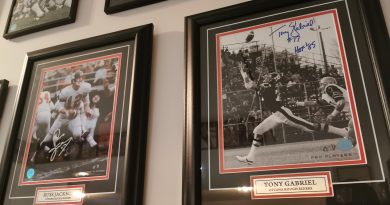Heritage Haymaking: All in a (sunny) Day’s Work For Farmers Then and Now
Rideau’s Rearview, By CJ Rooney
Summer is in full-swing. It’s a time of summer fun, children roaming free during their break from school, outdoor activities, and of course, agriculture.
Farming doesn’t stop to take a break and enjoy the warmth of the sun. Summer sun means it’s time to make hay. The way it’s done today isn’t all that different from how it used to be done, at its core.
First, keep an eye on the forecast, reading the almanac, and listening to the radio. Wait for a block of sunny days in the forecast, and get to work. The field is cut, whether by hand, or more often by a sickle-bar mower pulled by a team of horses.
After a day or two of drying time, the hay is then raked into windrows (long rows of hay) again by a team of horses. In those days, sections of windrows the width of the rake were raked end-to-end, working across the field. (Nowadays, rakes operated by a tractor run parallel to the windrows, and pile the hay to the side as the rake drives by, rather than dragging it.)
After the field is raked into windrows, the time has arrived to prepare the hay for storage. The two most common methods of storage were baling, and stooking (stacks of hay in a barn/mow). If hay was to be baled it was, in the earlier years, picked up from the windrows by hand, placed onto wagons and brought to the stationery baler, where it was processed into small rectangular bales, which were then loaded onto a wagon and brought to the barn. (In later years, horse-drawn balers were used, some of which had internal-combustion engines attached, to power the baler.)
If the hay was to be stooked, or placed in the mow, it was loaded onto the wagons and brought to the barn, where it was unloaded either by hand, or by a hay-fork pulley system, which ran on a track. Often, the team of horses would be hooked up to the end of a rope, which was run up through a series of pullies to the ceiling of the barn, and attached to a hook mechanism. The hook would be lowered down to grab a load of loose hay, and as the horses walked forward, the hay hook would rise towards the ceiling, and could then be directed to the appropriate location on the track. Another rope would be pulled to release the hook, and drop the hay, before the process was repeated.
So, on a sunny day, if you look out across the fields of the past, you’d see men, women and children in the fields, ‘making hay while the sun shines’. At least, that’s what you’d see if you took a glance in Rideau’s Rearview.
UPCOMING HERITAGE EVENTS:
-Milling Demonstration @ Watson’s Mill (Sundays 1-3pm)
(SUBMISSIONS WELCOME: If you have anything you’d like to see covered in this column, or have information you think may be of interest, call 692-4036.)





